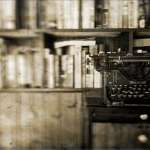
April 6, 2015 | Posted in AUTHORS, BOOKS, CLASSICS, MOVIES | By Arthur Chappell
Movie Review Oktober
Eisenstein’s formidable 1926 silent classic heavily stylized reconstruction of the events of the Russian Revolution, as Lenin’s Bolshevik’s seized control of Petrograd (Leningrad). It was inspired by John Reeds’ journalistic, but biased record of the revolution, Ten Days That Shook The World, later filmed by Warren Beatty as Reds.
Accuracy gives way to intense propaganda, in a movie with a cast of thousands – possibly more than took part in the original risings. The filming did more damage to the Winter Palace than the actual October Revolution (actually occurring in November in western calendars). The film carries many unforgettable images and early uses of film-making techniques. A statue of the Tsar is smashed down, piece by piece in the opening scene of the film, only to be restored by the Provincial government – Eisenstein shows this by simply reversing the film to show the statue reassemble, as if the government have simply tried to turn the clock back to the old decadent bourgeoisie ways.
The early failed rising, with rebels trapped by the Interim government raising the city bridges, with civilians and a brutally slaughtered horse hanging from a swing bridge are quite unforgettable. It is very likely that a horse was actually killed for these prolonged and close up graphic scenes – there was considerably less concern about the suffering of animals by movie makers until recent years. There are gentler images, such as the women’s brigade soldiers sleeping on the Winter Palace billiards tables.
A rather unsubtle mixing of Government official Kerensky with images of a statue of Napoleon. Other images show garish takes on religious figures from pagan gods to Christ. During the scenes of the storming of the Winter Palace, revolutionaries look in disgust at a portrait of the Tsar and his family being blessed by Jesus. In another shot, the revolutionaries are bemused to see the royal toilets.
Images of tension as votes are cast between Bolshevik and Menshevik factions on how to conduct the rising are cast, and during the truce as the proletarian heroes await in hope a peaceful outcome to the looming conflict, are stunning.
Many images were later cut from the movie by Stalin, especially shots depicting Trotsky who Stalin virtually erased from all historic records. What remains is still among the greatest film-making and camera work of all time. Kerensky seen in direct comparison to a mechanical peacock being one of many haunting, lasting images. Lenin appears in early scenes as a great inspirational orator, treated with saintly reverence by the masses offered bread for all.
Arthur Chappell
Related articles across the web
Related posts at Spacial Anomaly
Leave a Reply
*













Be the first to comment.